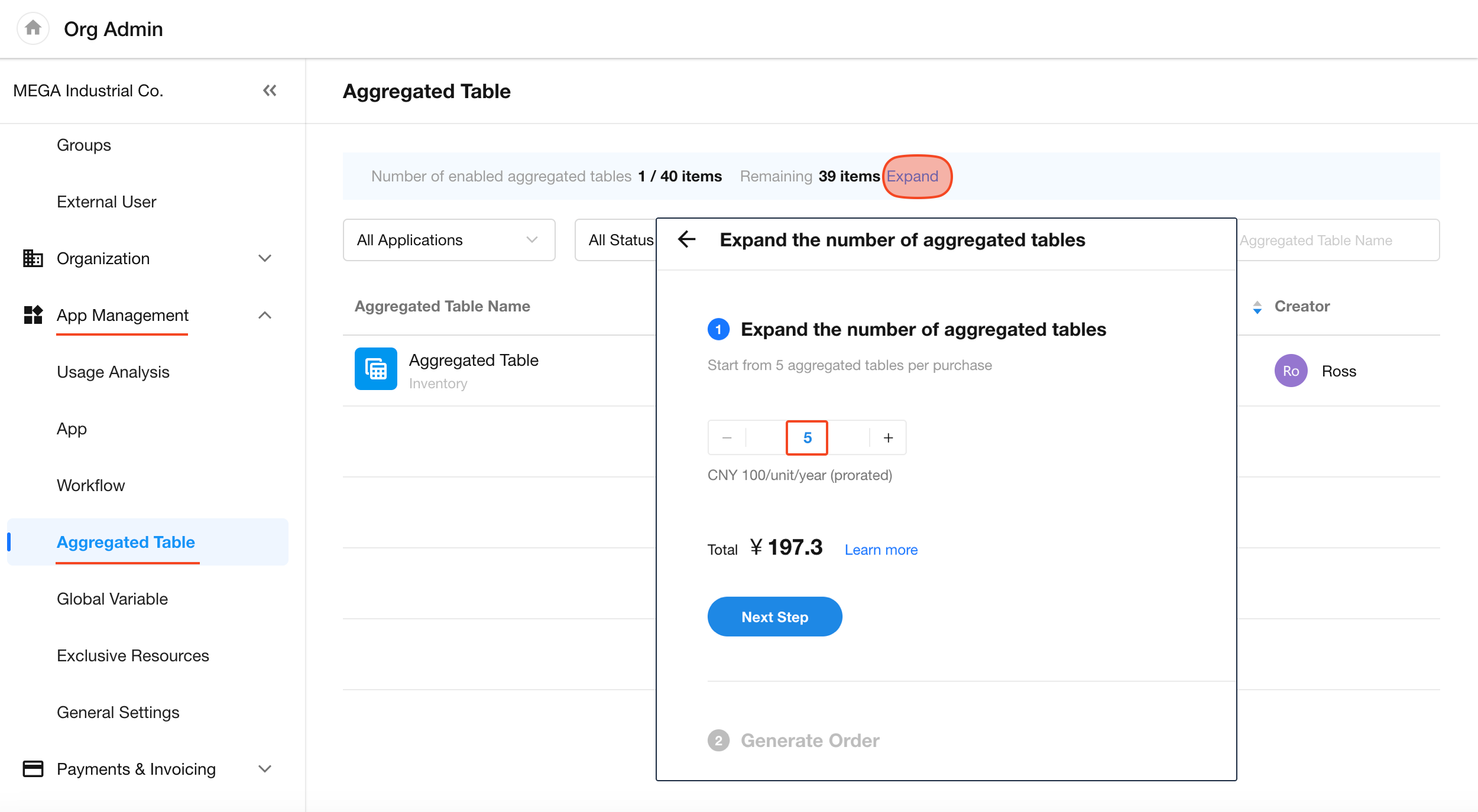Aggregated Table
Overview
The Aggregated Table allows you to efficiently compute and summarize data across multiple worksheets, generating a virtual table that can serve as a data source for workflows, and charts.
Use Case Example
In an Inventory Management app with four worksheets — Products, Inbound Details, Outbound Details, and Returns — you can use an aggregated table to calculate each product’s total inbound, total outbound, and total returned quantity, then compute the real-time stock level accordingly.

The data from the aggregated table can be visualized using a pivot table embedded in a custom page.

Creation Steps
1. Entry Point for Aggregated Table
App administrators can navigate to [App Management] > [Aggregated Table] and click "Create Aggregated Table".
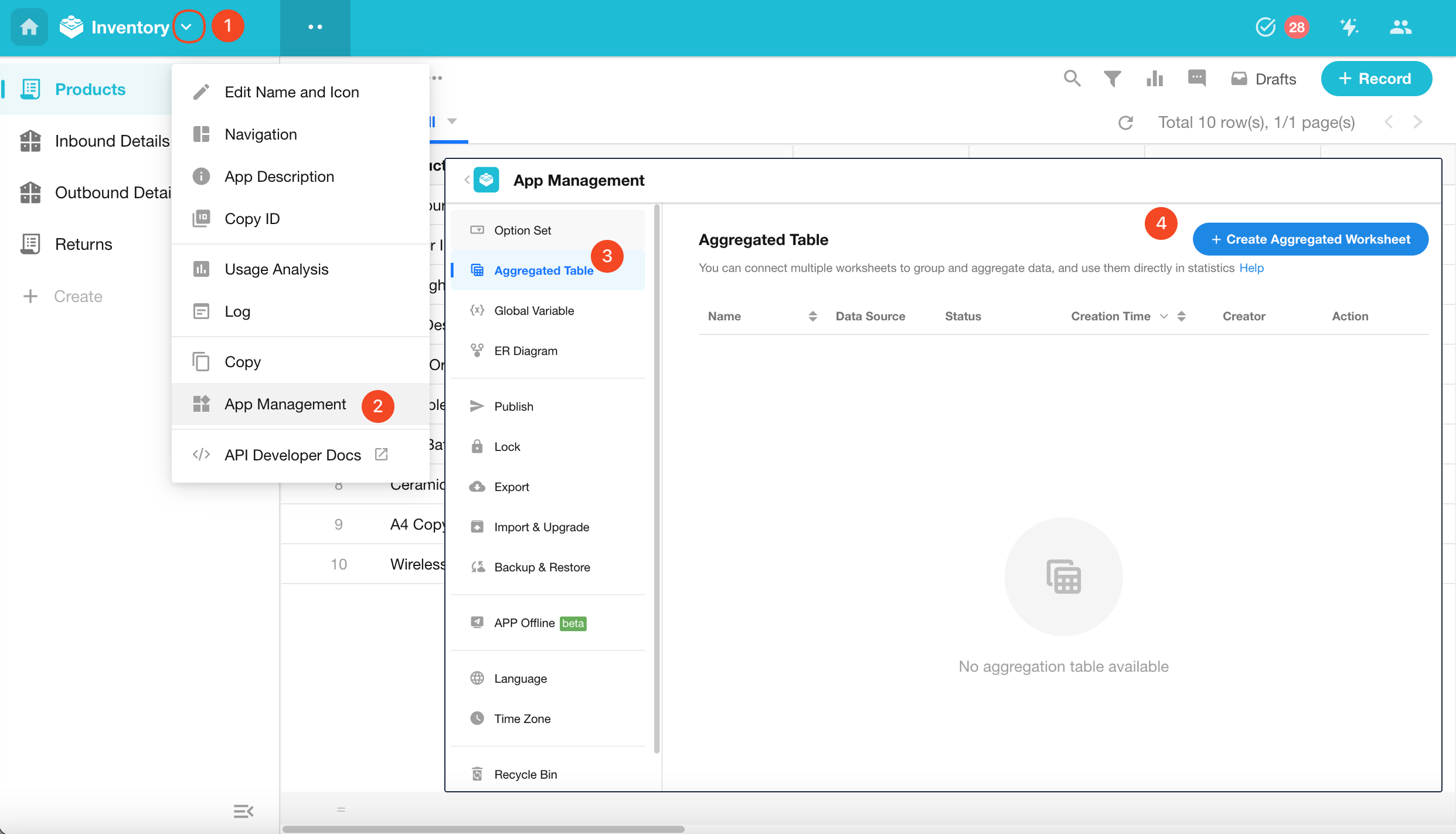
2. Select Data Sources
Select Worksheets
Aggregated tables can compute data from one or multiple worksheets.
- Each worksheet can only be added once.
- You may also select worksheets from other applications.
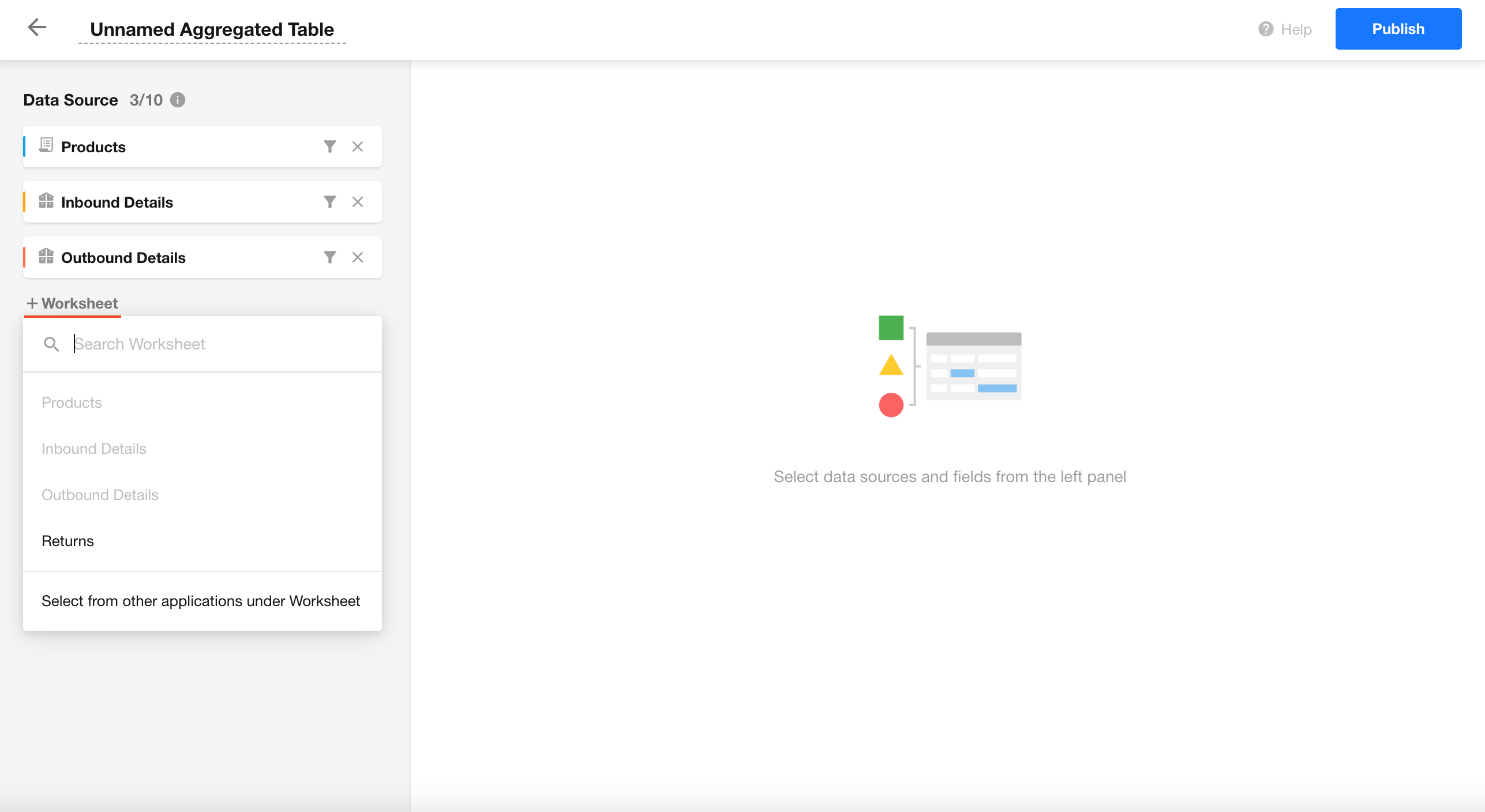
Filtering
Set filter conditions for each worksheet to exclude irrelevant data from the aggregation. Only filtered data will be included in the aggregated table.
In this example, we filter the Products worksheet to include only items with a status of "Active".
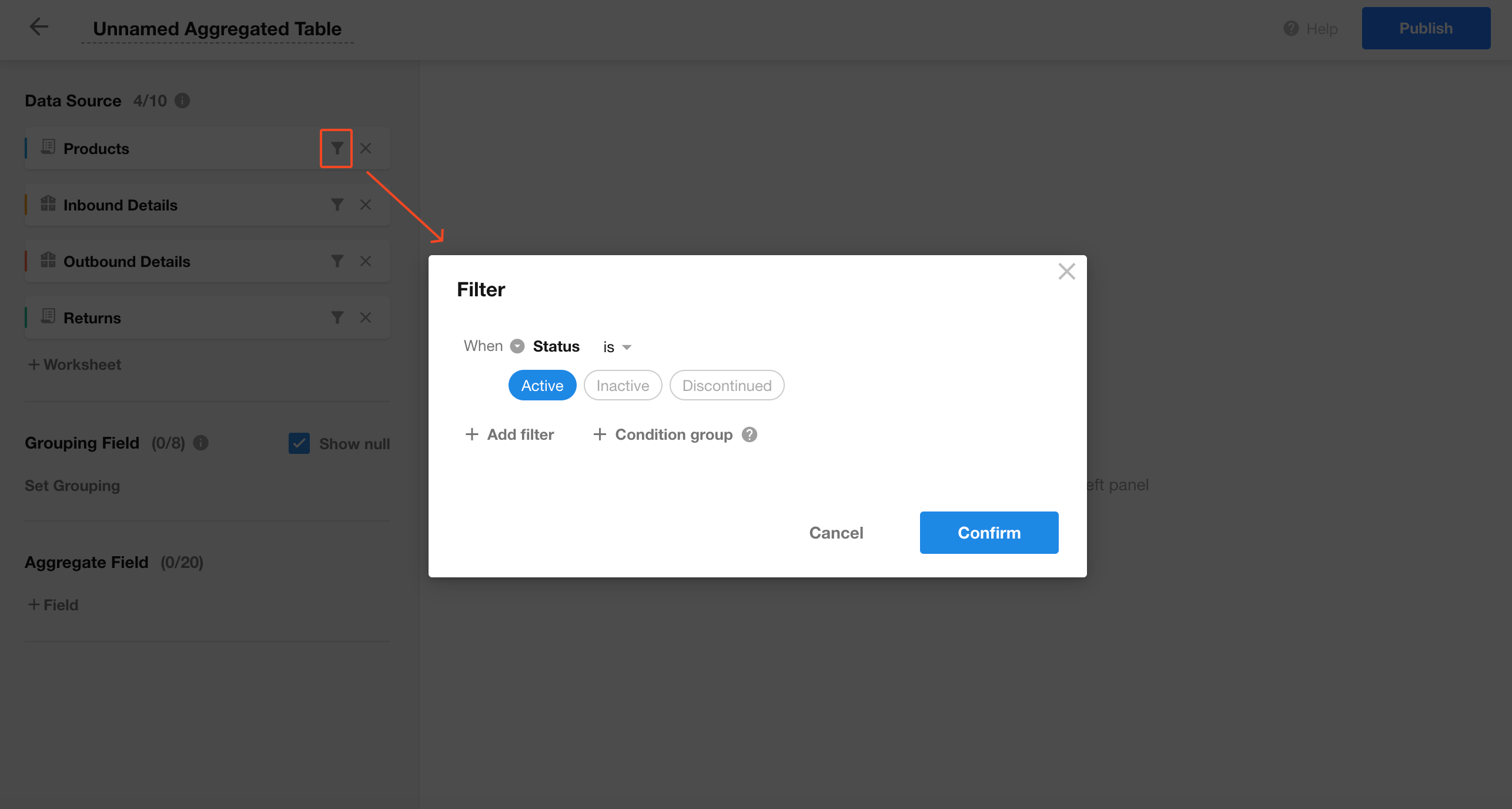
3. Grouping
Add the fields you want to group by in the aggregated table. Data will be summarized based on these groupings.
In this example, we group by Product and Product Code.
Each worksheet must contain both fields, although the field names can differ — as long as they represent the same data entity.
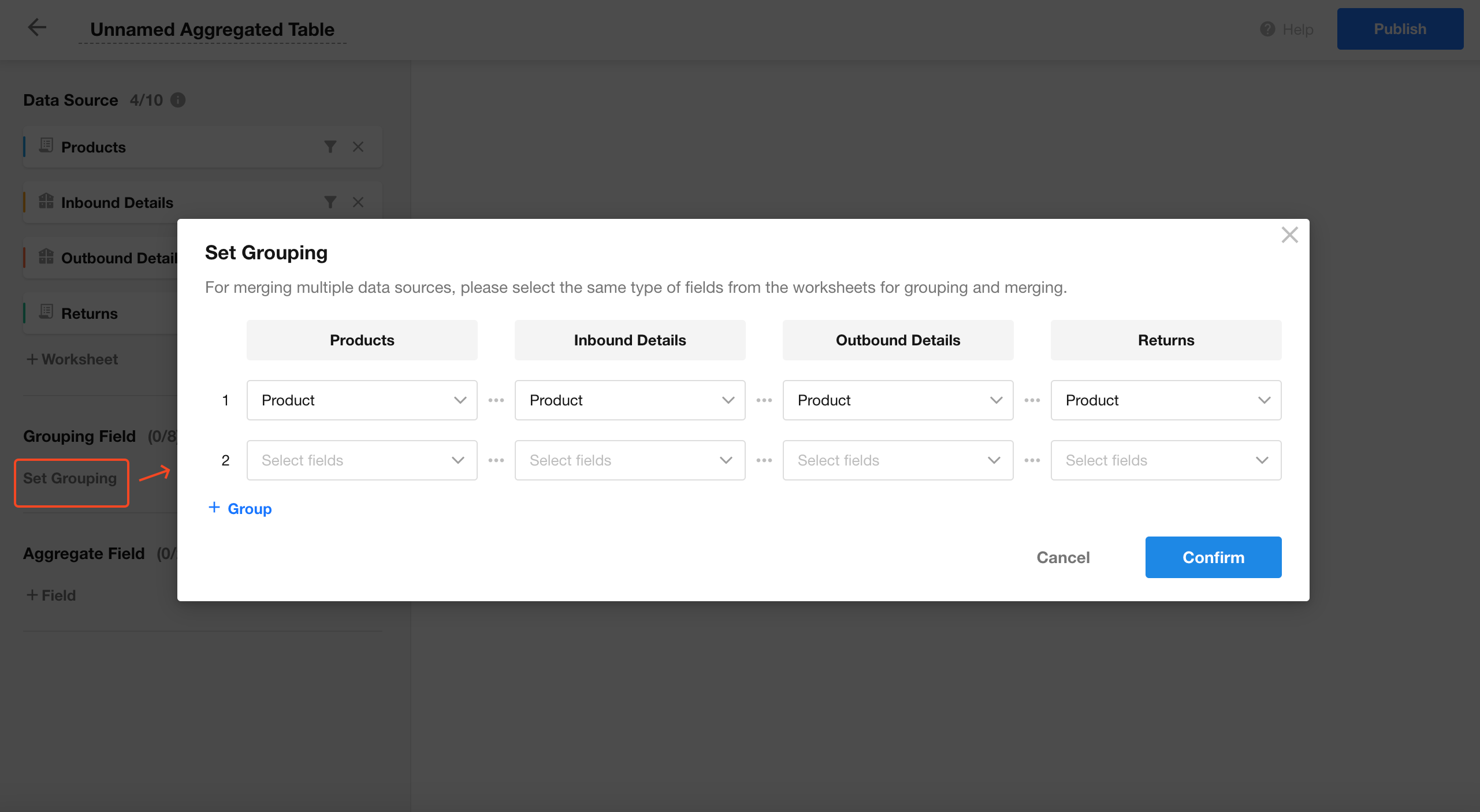
You can rename and reorder the grouping fields as needed.
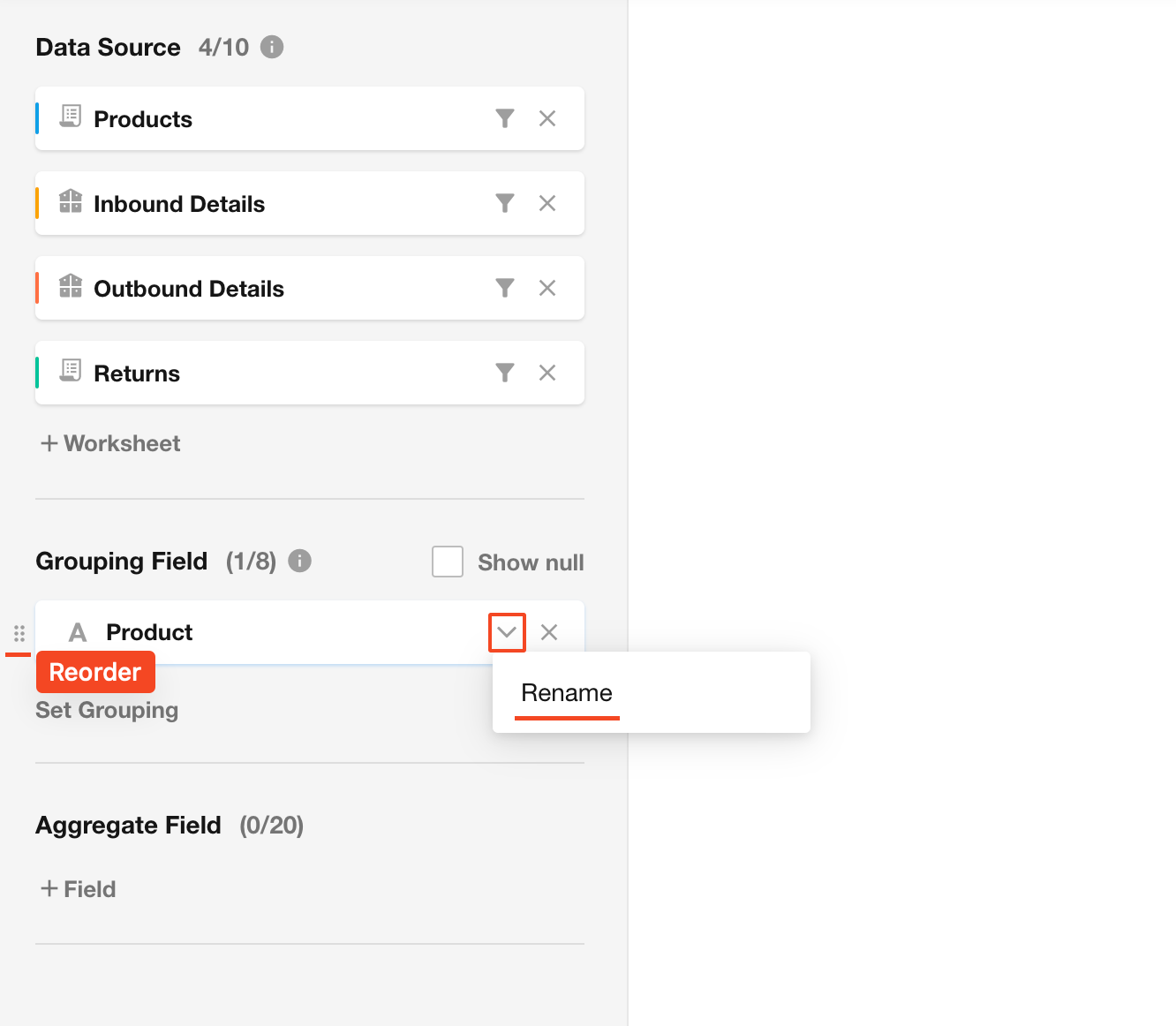
Show Empty Values:
If unchecked, any row with an empty grouping field will be excluded from the aggregated table.
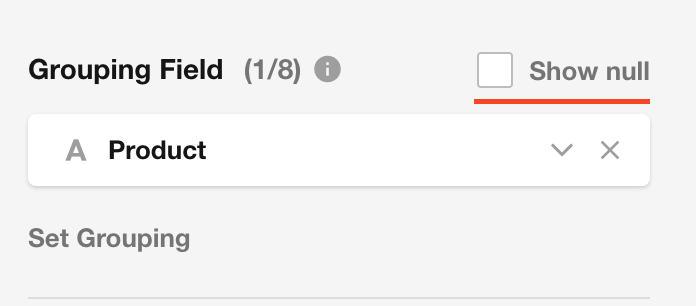
Array Fields as Dimensions:
Array-type fields (e.g., multi-select) can be used for either combined or split aggregation.
Example:
| Name | Interests (Multi-select) |
|---|---|
| Jim | Basketball, Volleyball |
| Joey | Basketball, Tennis |
| Ross | Football, Tennis |
Combined Aggregation Results:
| Interest | Record Count |
|---|---|
| Basketball, Volleyball | 1 |
| Basketball, Tennis | 1 |
| Football, Tennis | 1 |
Split Aggregation Results:
| Interest | Record Count |
|---|---|
| Basketball | 2 |
| Volleyball | 1 |
| Tennis | 2 |
| Football | 1 |
4. Aggregate
Aggregation fields allow you to perform calculations on fields from the selected worksheets, including:
- Sum
- Maximum
- Minimum
- Average
- Count
- Distinct Count
You can also create Calculated Fields, which compute values based on other aggregation fields. Each aggregated table supports up to 20 aggregation fields.
If the app name, worksheet name, or field name contains special characters, the worksheet or field may not appear or data synchronization may fail.
The following characters are not allowed:
'~!@#$%^&*()-+=<>?:"|,./;'[]·!¥…()—《》?:“”【】、;‘,。『』「」. Additionally, spaces are not allowed.
In this example, we calculate the total inbound quantity, total outbound quantity, and total returned quantity for each product, then create a calculated field to determine the current stock.
Aggregation Fields from Worksheets
Click "+ Field" to select a field from the worksheet, and then configure the aggregation method and data format.

Calculated Fields
Calculated fields can reference only the fields defined within the aggregated table.
In the example below, to compute Current Stock, we use:
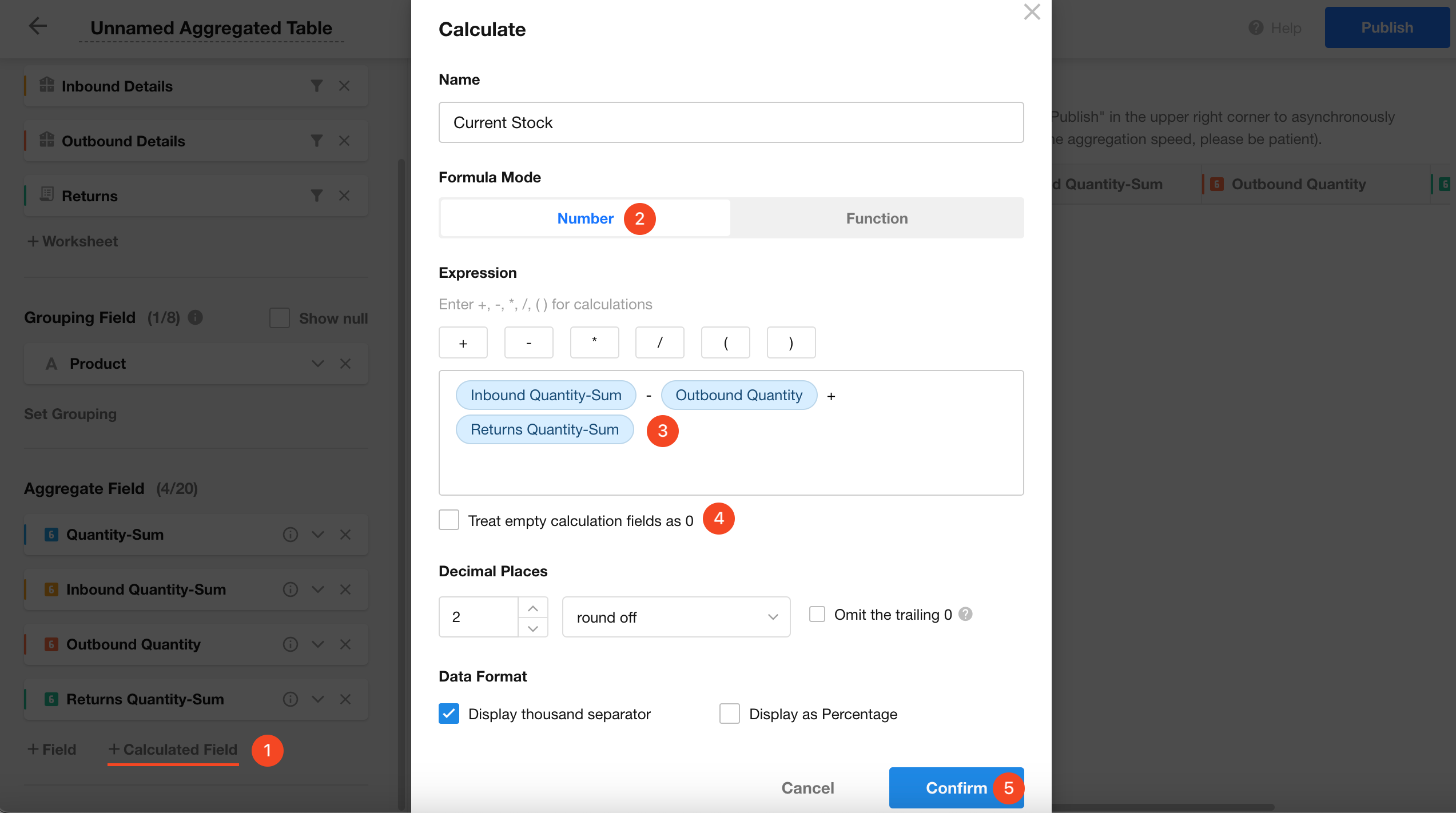
5. Preview and Publish
After configuration is completed, click "Preview Data" to generate a dataset preview. If the results are correct, rename the aggregated table (if needed) and publish it.
Once published, the aggregated table becomes available to other modules.
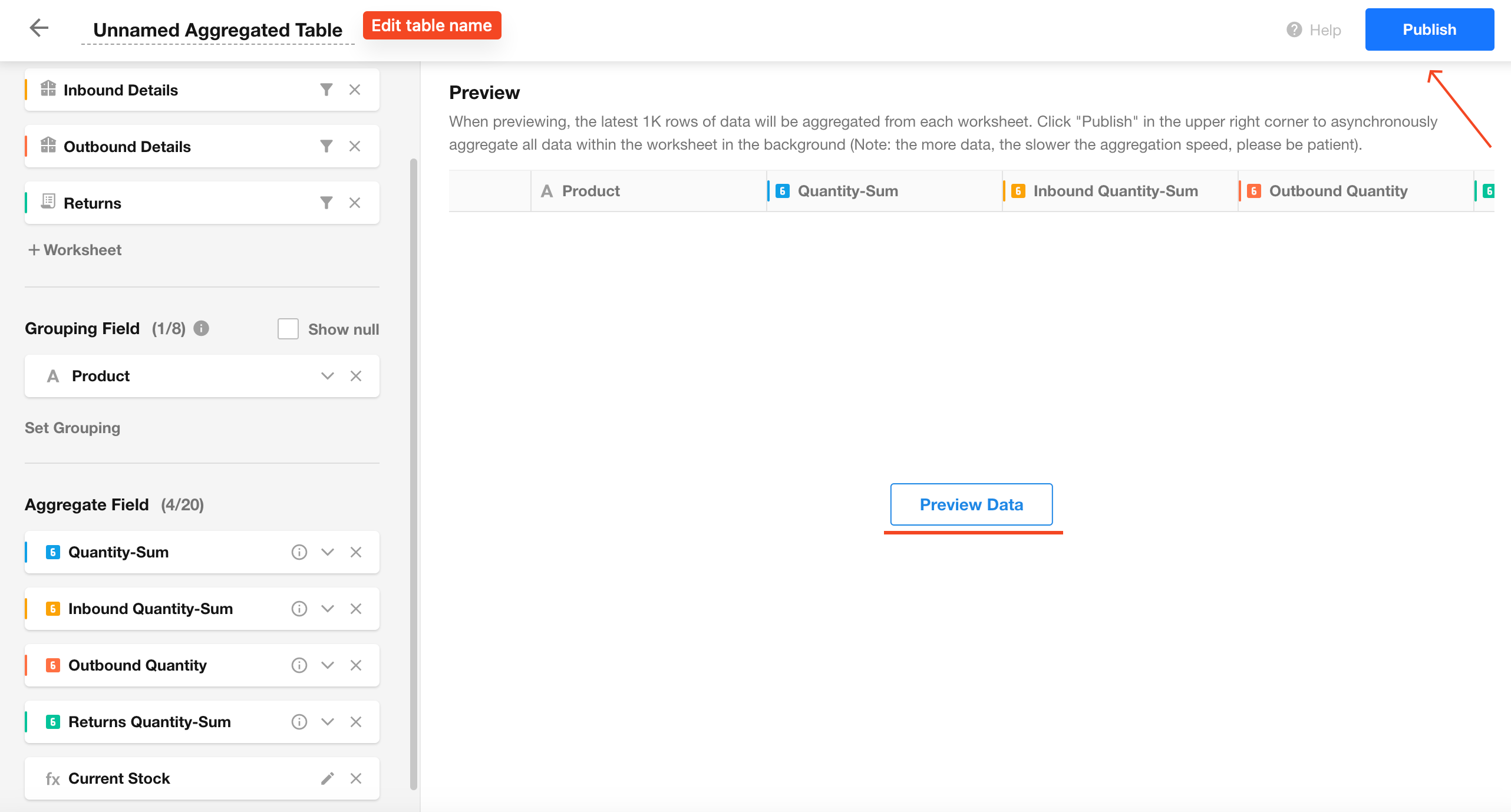
Using Aggregated Data
In Custom Pages (Charts)
When configuring a chart in a custom page, select the Aggregated Table as the data source.

In Workflows
The "Get Multiple Data" node in workflows supports querying data from the aggregated table.
- Note: Aggregated tables only support querying. They do not support update, or delete operations.
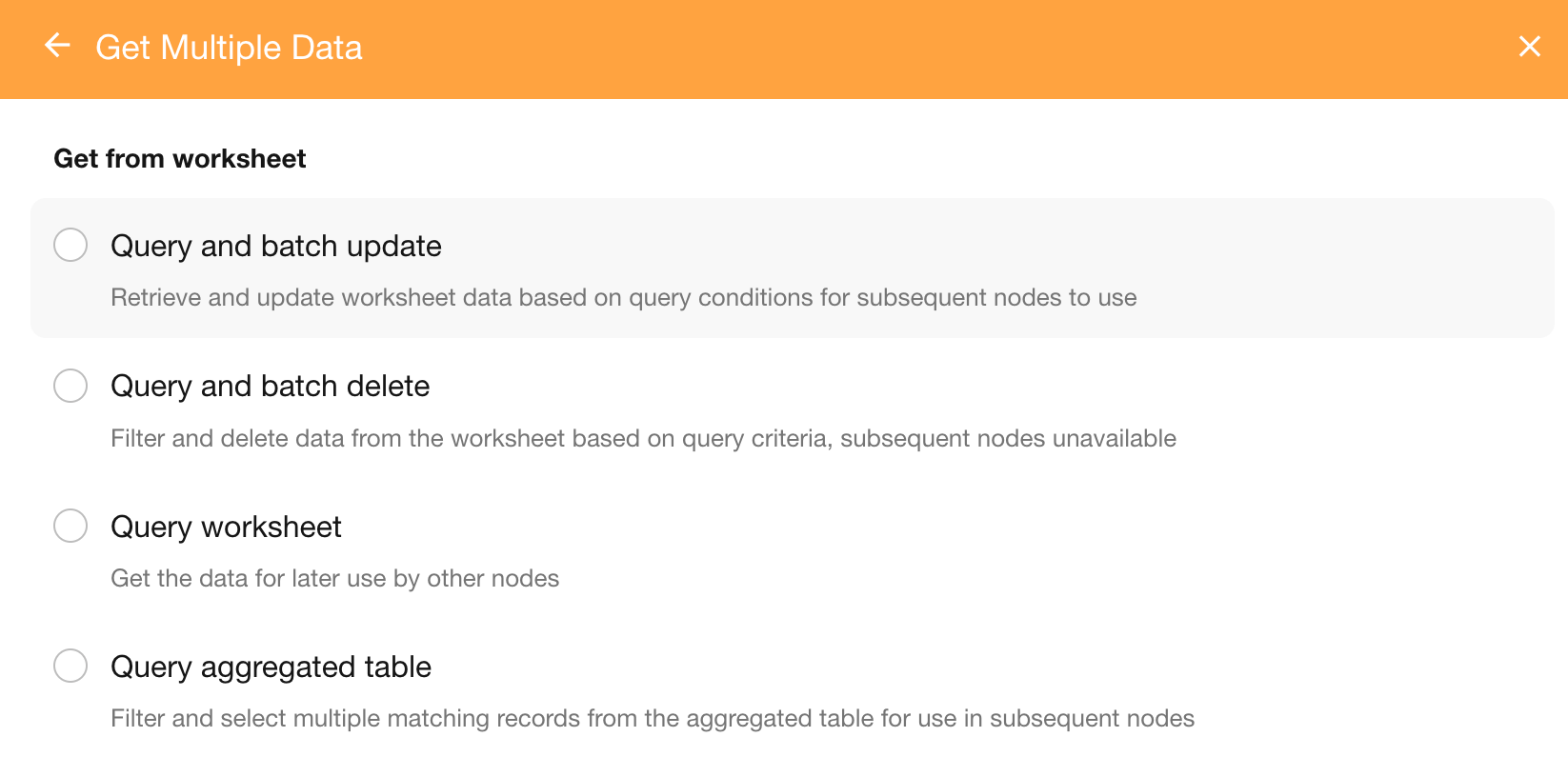
Aggregated Table API
Aggregated table data can be accessed via API.
You can find the relevant API endpoints in the App API Documentation.
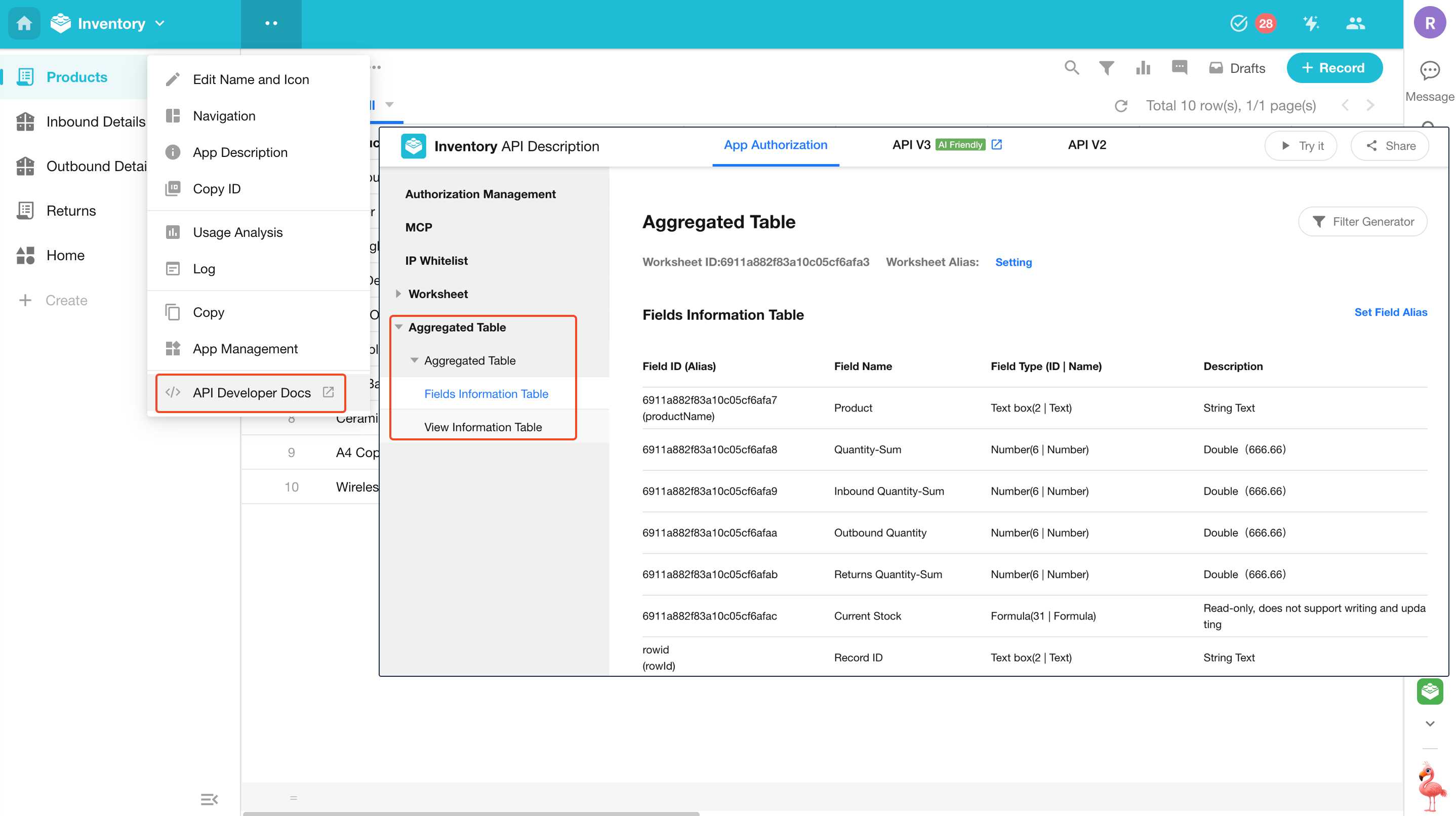
Management
Managing Aggregated Tables
App administrators and developers can perform the following actions on aggregated tables within an app:
- Create
- Delete
- Edit
- Duplicate
- Enable / Disable
- Rename
- Re-sync data
Re-syncing will refresh data from the source worksheets.
If multiple aggregated tables share the same data sources, all related tables will be updated together.
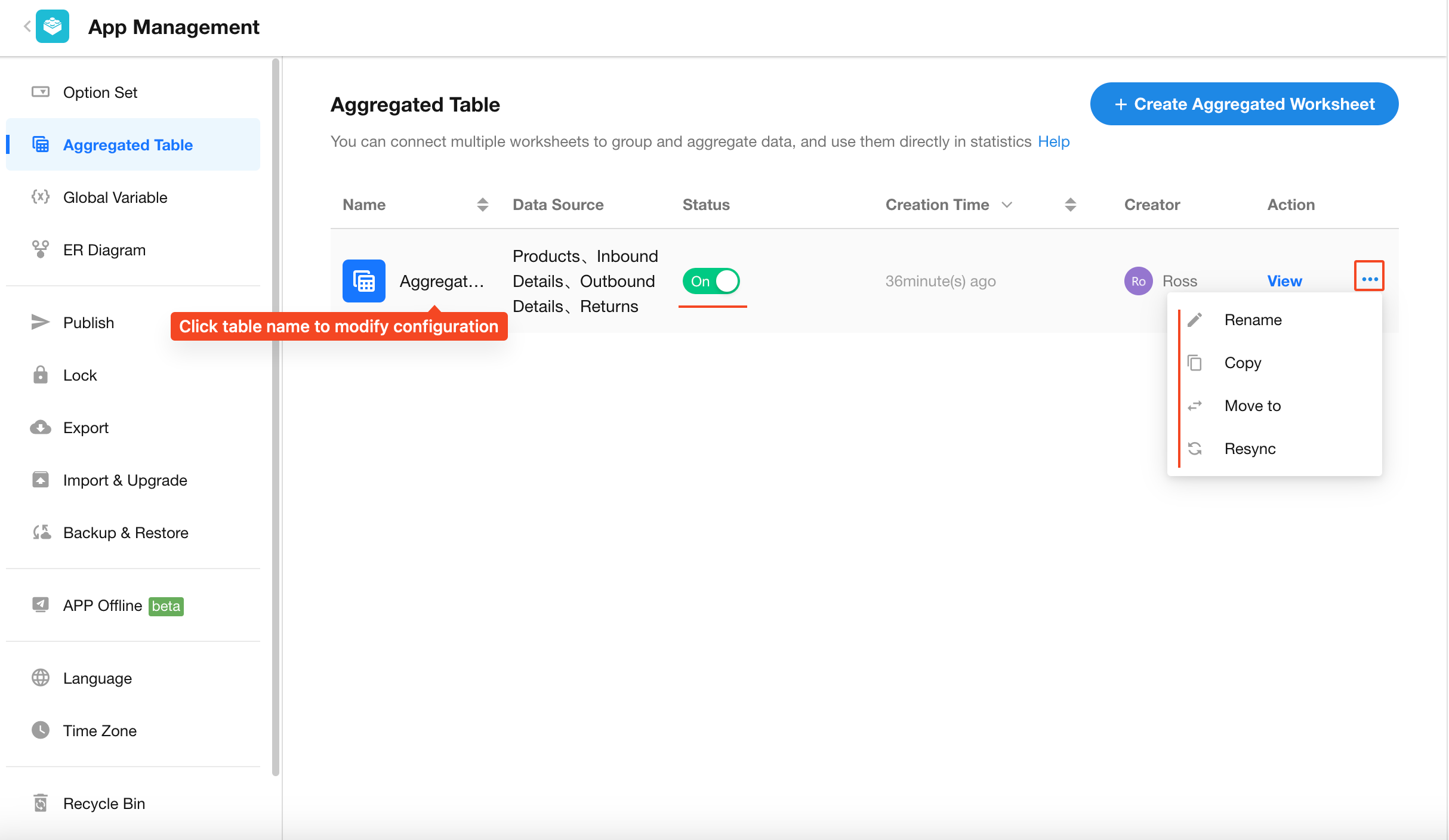
Super Admins and App Admins at the organization level can go to [Org Admin] > [App Management] > [Aggregated Table] to enable or disable any aggregated tables across the organization.
Expanding Aggregated Table Quota
If you require more aggregated tables, paid organizations can purchase additional quotas.
Purchase Path:
The Super Admin of the organization clicks the profile avatar, then navigates to: [Org Admin] > [App Management] > [Aggregated Table], and clicks the “Expand” button on the page.
- Select the number of aggregated tables to purchase (in multiples of 5).
- Complete the payment to activate immediately.
Payment methods supported:
- Credits
- WeChat Pay
- Alipay
- Bank Transfer (may require manual processing time)
